Trivia Question: What do Elvis Presley, a Porsche, and Donald Duck have in common (other than being famous)?
Answer: They all have ducktails.


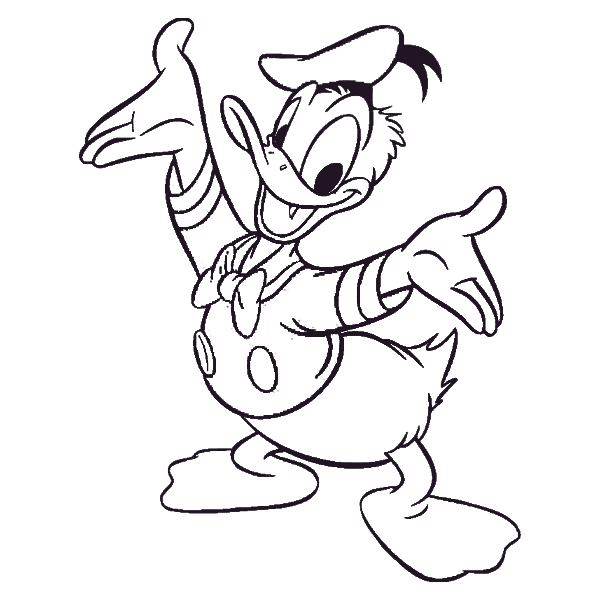
Is that a play on words? Not at all. Tails come in a variety of shapes and sizes, each offering unique features designed for specific functions. The tail on a touch screen (the part of the sensor that plugs into a controller board) is no different.
Generally speaking there are three main options for a touch screen tail, tail location, length, & controller integration. Do these specifications really matter?
- Tail Location – Where is the best place for the tail to be located on the touchscreen?
Seems simple enough, but not necessarily so. Talk with manufacturing and they will give one answer. Talk with service or repair and they will have a different answer. Talk with the component supplier and they will have many answers.
The tail needs to plug into a printed circuit board (PCB) in some fashion. First, locate the best location for the PCB taking into consideration overall performance of the device, ease of assembly and serviceability requirements. That’s it, there is no second; you have just figured out the best location for the tail.
- Tail Length – What is the optimal length for the tail?
Long tails can make assembly easy. The can also act like giant antennas for noise, get caught in other components, drive up the component price.
Short tails can be an assembly nightmare and increase the cost of other components.
Most touchscreen tails are 2-3 inches in length. This seems like a reasonable compromise between components cost, assembly cost and ease, as well as performance requirements.
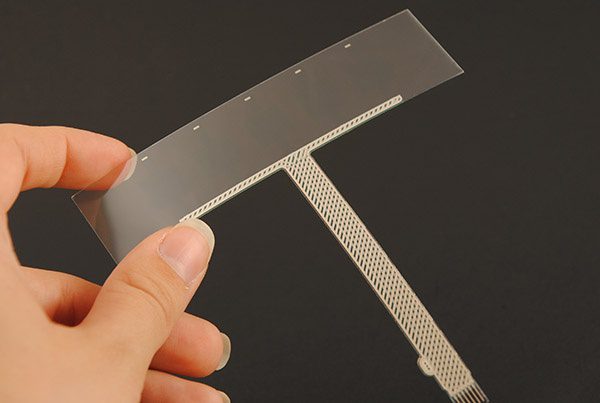
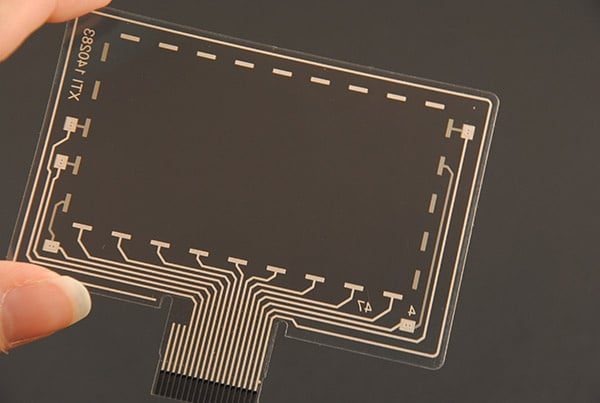
- Controller integrated on the tail (COF = Chip On Flex) – Yes or No?
If money is not object, then choose ‘Yes’ and you’re done. If cost is important, continue reading.
The easiest way to lower your bill of materials (BOM) cost is to include the touch controller on the PCB already present in the device. In this scenario, the touch controller, IC (integrated controller), is procured and placed for the lowest possible price. The primary challenge with this approach is the distance from the sensor to the controller; if too great, electrical noise on the tail reduces touch performance to an unacceptable level.
Integrating a daughter board (also known as Chip On Board (COB)) is a popular approach as it is cost effective from both a purchased price perspective and assembly perspective. With most controller boards small in size, daughter boards offer great flexibility on location and installation. This method also helps isolate the touch system from the rest of the system should either need replacement or updating.
COF – integrating the controller on the tail will increase the cost of the touch screen significantly, but also offer advantages including the smallest possible use of space for the touch controller and reduced negative impact on touch performance resulting from electrical noise (not including the display noise…that’s a whole other topic). If board space and internal cabinet space are at a premium, justifying the extra cost for a COF solution is easy. (Comment: many off-the-shelf touchscreens use COF integrated tails. This is part of the one-size-fits-all approach to with the standard option touchscreen. For more information on the pros and cons of the one-size-fits-all touchscreen compared to a custom touch solution, please read our ebook or contact Xymox for more information.)
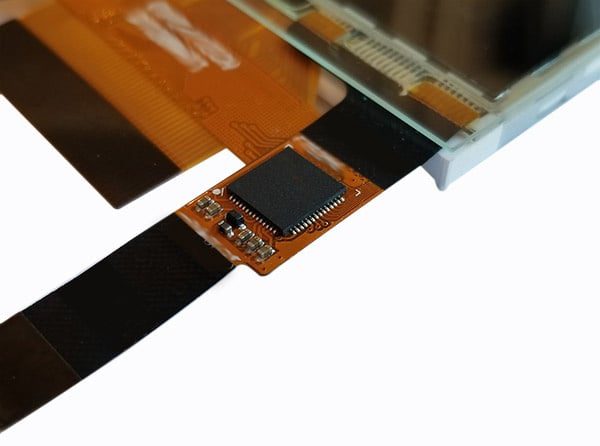
Integrated Tails Vs Bonded Tails
Standard ITO touch screens use bonded polyimide tails. Most sensors made with ITO alternative materials (like a Xymox sensor) can offer integrated tails; meaning the tail and sensor are both part of the same continuous piece base PET film and there is no interconnect.
ITO (indium tin oxide) is brittle and cracks when bent or flexed. Cracking is not good for electrical conductors, thus copper FPCs are often used for tails. Xymox sensors made with Kodak HCF film {link to Kodak} are based on PEDOT (manufactured by Heraeus) as the conductive material. PEDOT is extremely flexible and will not crack or degrade as it is flexed. In fact, one of the early applications for PEDOT was as an anti-static coating on movie projector film.
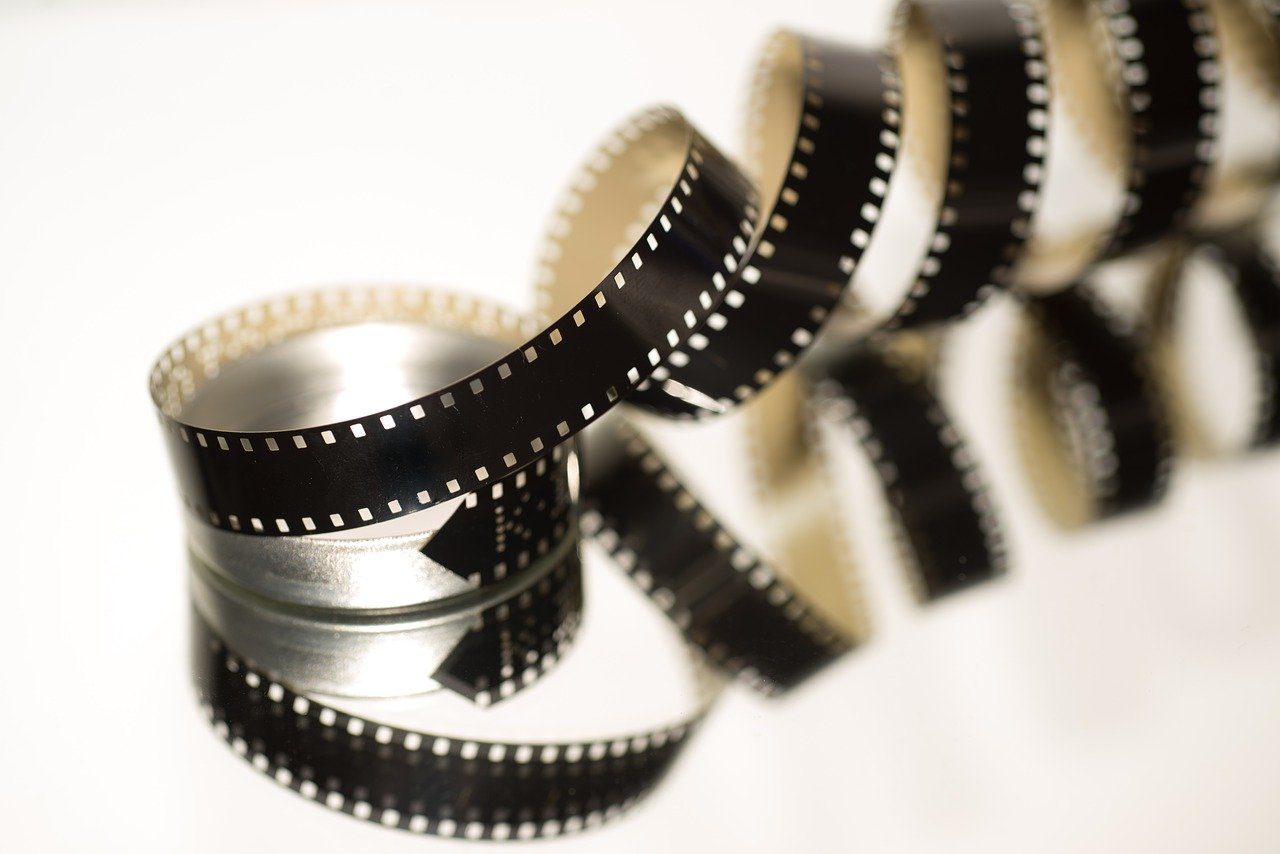
Integrated tails are cost effective and provide better reliability because they do not require the additional materials and processing used for bonded tails. Bonded tails require the sensor and tail be laminated together by an operator, most often, in a single-up process using anisotropic conductive film (ACF). This tail bonding process has been used for years and proven to meet industry standards for reliability, but (stated bluntly), is extra work and materials that are not needed with an integrated tail.
Want to learn more about touchscreen construction? Contact Xymox to schedule a visit to check out our Capacitive Touch Demonstration kit!
